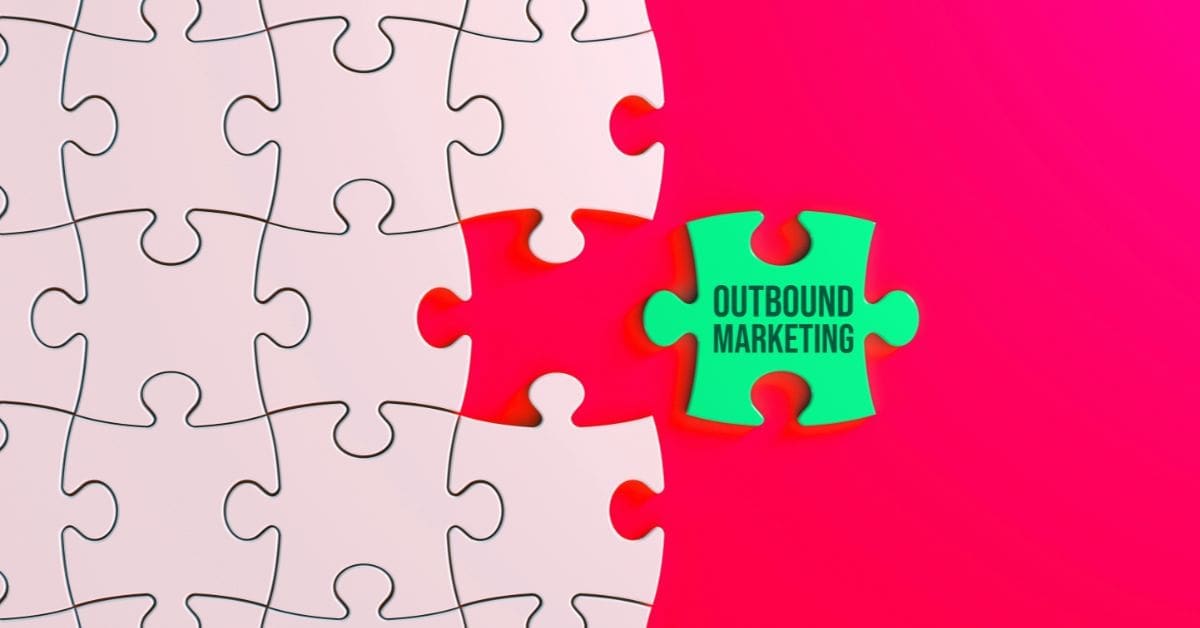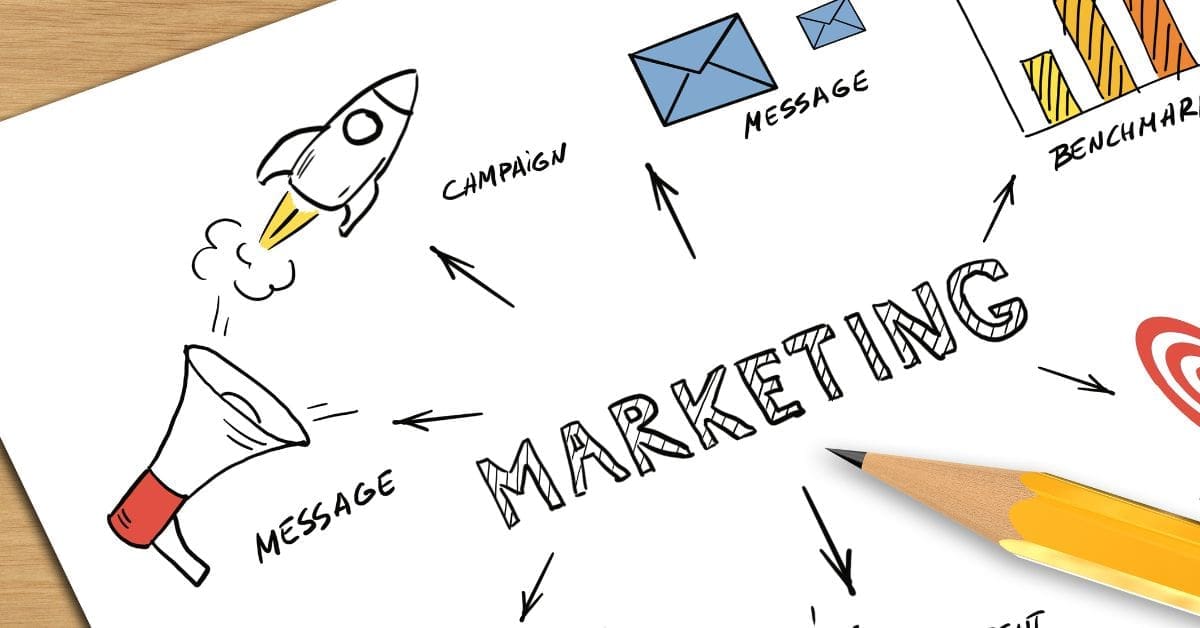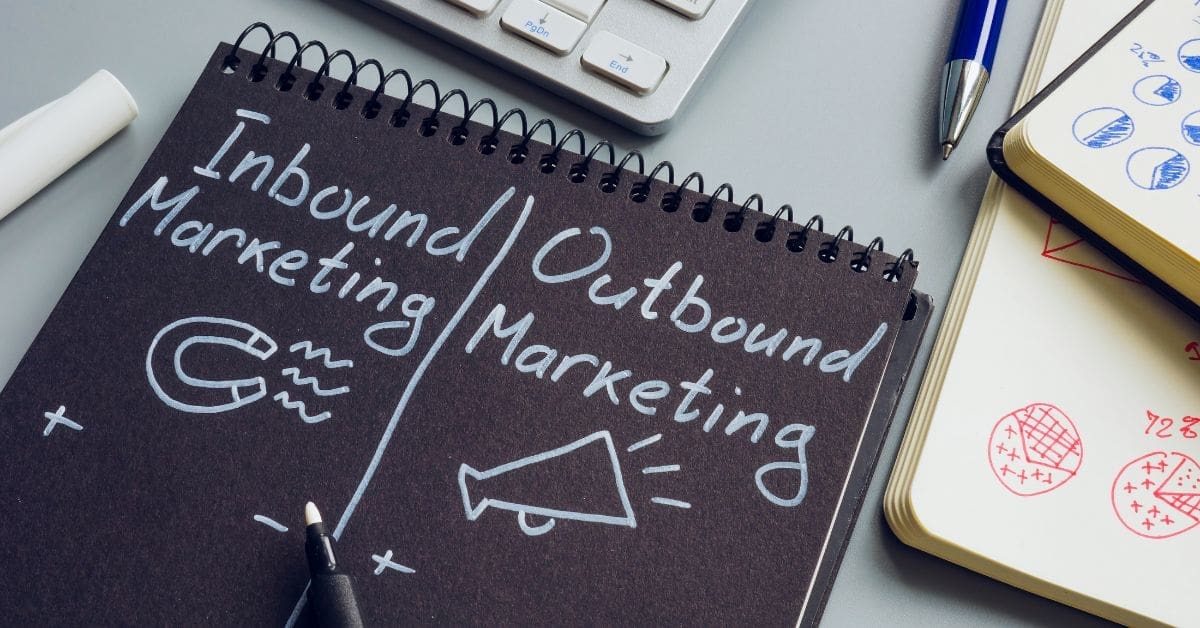Marketing is an essential aspect of any business, as it helps to promote products or services and attract customers. In the past, outbound marketing, such as traditional advertising and cold calling, was the go-to strategy for marketers. However, the rise of the internet and modern technologies has given birth to inbound marketing, which focuses on creating valuable content and attracting customers organically.
If you are unsure about whether to invest in inbound marketing or stick with outbound marketing, it is important to understand the key differences between the two and how they can impact your business. Each approach has its own advantages and disadvantages, and knowing which one aligns with your business objectives can make a significant difference in your marketing success. So, let us dive into the world of inbound and outbound marketing and explore which strategy will work best for your business.
Understanding Inbound Marketing

Inbound marketing refers to a multifaceted approach for attracting customers by creating valuable content that pulls them towards your company and products organically. Instead of interrupting target customers through disruptive advertising, inbound focuses on gently engaging them during the research phase of their buyer’s journey.
The inbound methodology relies on various channels working in concert – a company blog providing education through useful articles, search engine optimisation allowing content to surface at relevant queries, social media delivering information while building connections, and email nurturing relationships via personalised recommendations and offers. The goal is to understand what questions and issues prospects face and address them through consistent content distribution. This transitions potential leads into informed customers over time.
Inbound marketing techniques have been picking up tremendous traction amongst modern B2B and B2C companies because they better align with how people research and buy today. A research by MarTech indicates that B2B buyers consume an average of 13 content pieces before deciding on a vendor. 60% of buyers are more likely to consider vendors that take an inbound educational approach versus 35% for traditional sales methods, making it a more palatable starting point. The rise of digital MarTech stacks highlighted in our previous article has enabled more businesses to pursue coordinated and measurable inbound strategies as well.
Inbound Marketing: An example
An exemplary example of inbound marketing can be seen through the implementation of a content marketing strategy. Content marketing is a form of inbound marketing that focuses on creating and distributing high-quality, valuable content to attract and engage a targeted audience.
Let us take the case of a B2B company that sells business analytics and intelligence platforms, as an example. As an inbound focused organisation, they centre their marketing efforts around creating helpful blog posts, ebooks and videos that educate prospective clients on relevant topics. They distribute this content through their company blog, guest articles on industry publications, and all major social channels. These posts attract visitors interested in analytics to their owned properties. By focusing on creating high-quality and relevant content, the company can attract a steady stream of organic traffic to their website. As visitors engage with the content, they are encouraged to subscribe to the company’s email newsletter, allowing the company to nurture these leads and move them further down the marketing funnel.
The company also provides useful tools like readiness assessments for visitors to gauge their needs. Contact information is captured in exchange for platform trial offers. Leads are nurtured through targeted emails with applicable content recommendations that moves them further into the sales funnel. Their inbound marketing strategy could also include sponsoring and attending relevant industry events to connect with modern analytics practitioners directly.
By taking an inbound approach, this company aims to be helpful rather than intrusive through the full span of the customer journey – driving awareness, engagement, conversions and retention holistically via educational content at scale. This inbound marketing approach helps the company establish strong relationships with their target audience and eventually convert these prospects into loyal customers.
Benefits of Inbound Marketing
The rise of digital technology and the ever-evolving landscape of marketing have brought about a change in basic assumptions in how businesses connect with their target audience. Inbound marketing, a proven and data-driven approach, has emerged as an effective strategy for businesses to attract, engage, and convert potential customers, with the following benefits:
Cost-effective
Inbound marketing focuses budget on owned assets like blogs, tools, and resources that continue to pay dividends. Once content is created, it attracts leads for months or years at relatively low cost rather than having to pay each time. This scalability allows small teams and budgets to compete.
Target ideal customers
Using analytics and data-driven strategies, businesses can identify their target audience’s needs, preferences, and pain points. This enables them to create personalised and tailored content that resonates with their prospective customers, increasing the chances of converting them into loyal buyers. In fact, according to this McKinsey study, “companies that grow faster drive 40 percent more of their revenue from personalization than their slower-growing counterparts.”
Build a strong brand
Consistently useful content showcases expertise while nurturing relationships with no pressure. This cultivates brand affinity with promoters who remain customers for long periods. Inbound marketing can help businesses establish themselves as thought leaders in their industry. This is especially important for industries that are new or niche.
Measurability & Optimisation
Digital channels allow detailed tracking related to content performance. Analytics help continuously improve lead quality and conversions by tweaking what inbound tactics resonate best. Effective SEO strategies can further improve their website’s organic search rankings and drive more targeted traffic via the content.
Challenges of Inbound Marketing
While inbound marketing has proven to be a highly effective strategy for businesses, it is not without its challenges. Understanding and overcoming these challenges is crucial for maximising the success of an inbound marketing campaign:
Time and Effort
According to a survey by HubSpot, 51% of marketers identified creating high-quality content as their biggest inbound marketing challenge. Consistently researching, building, publishing, distributing, and repurposing expert content for potential leads requires time and effort. Partnering with an external agency like groSamriddhi or outsourcing to specialists can streamline this process and free up valuable resources for small businesses.
Competition in the digital space
The more effective inbound marketing becomes, the more crowded it gets. While everyone’s using similar tactics, standing out becomes difficult. Doubling down on content value and promotion alone may not be enough to cut through the noise. Small businesses can combat this by finding their niche, focusing on unique storytelling, and constantly exploring alternative channels to reach their audience.
ROI Attribution
Unlike outbound marketing strategies that provide immediate feedback, inbound marketing requires a longer-term approach. It takes time to build trust, establish expertise, and nurture leads through the marketing funnel. Measuring the impact of inbound marketing efforts on business revenue and growth requires comprehensive analytics and tracking systems.
While inbound marketing presents its fair share of challenges, businesses that can overcome these obstacles stand to benefit greatly. By investing in research, technology, and a capable execution partner like groSamriddhi, businesses can create successful inbound marketing campaigns that attract, engage, and convert potential customers.
Understanding Outbound Marketing

Outbound marketing, also known as traditional marketing, is a marketing approach where businesses actively reach out to potential customers through various means of advertising and promotional efforts. This type of marketing aims to generate awareness and interest in a product or service by pushing messages out to a broad audience.
Common outbound marketing tactics include television and radio advertising, print ads, cold calls, and direct mail campaigns. These methods rely on grasping the target audience’s attention and delivering the marketing message without being sure of their explicit interest. The goal is to capture the attention of as many people as possible in the hope of converting some into customers.
One key characteristic of outbound marketing is its emphasis on quantity over quality. It often involves casting a wide net and targeting a large, general audience rather than specifically tailoring the message to a particular group. This approach, if not executed thoughtfully, can sometimes lead to an elevated level of wasteful spending, as many individuals who receive the marketing message may not have any interest or need for the product or service being advertised. Let us look at how to use Outbound Marketing effectively.
Outbound Marketing: An example
Outbound marketing is a traditional approach to marketing where a business initiates contact with potential customers to promote its products or services. Let us take the example of an online apparel store that wants to promote a new line of winter coats. Since the target audience for their product is wide and it is important to spread the word for their limited collection, they choose to use outbound marketing through cold email marketing and advertisements.
They start by creating a well-designed email with attractive images of their winter coats, highlighting their features, benefits, and any special promotions or discounts. They use this email to reach a wide variety of past customers and individuals who have signed up for their newsletter on their portal.
Outbound marketing methods like this can also include direct mail, cold calling, advertising (including digital), and even in-person events and trade shows. While outbound marketing can be effective, it is becoming increasingly important for businesses to balance it with inbound marketing strategies and tracking metrics to improve the performance of the overall marketing campaign.
Benefits of Outbound Marketing
While inbound marketing has gained immense popularity in recent times, it would be remiss to overlook the unique advantages that outbound marketing can bring to the table. In fact, it holds its own in certain situations, offering distinct benefits that businesses should carefully consider when formulating their marketing approach:
Increased Reach and Visibility
One of the key strengths of outbound marketing lies in its ability to reach a wide audience. Methods like pay-per-click ads, paid social media promotions, online display banners, and pre-roll video ads allow businesses to directly engage with website visitors and online users who make up their target demographics and buyer personas. This proactive digital approach gives companies more control over who they aim to reach compared to more passive inbound tactics. These outbound methods are also particularly effective for establishing brand recognition and recall.
Targeted Campaigns
Contrary to widespread belief, outbound marketing also can deliver tailored messages to the right audience. With advanced targeting capabilities and segmentation tools, businesses can refine their outbound marketing campaigns to specific consumer groups that align with their ideal customer profile. Cold emails, for example, can be personalised and sent to a carefully curated list of prospects, ensuring a higher probability of engagement and conversion. By leveraging data-driven insights, businesses can efficiently deliver relevant messages to the right people at the right time.
Quick Results and Immediate Impact
Unlike inbound marketing efforts, outbound methods such as email campaigns and digital advertising provide brands with an immediate impact. This is particularly advantageous for businesses operating in industries where time-sensitive promotions and limited-time offers play a significant role in driving revenue. Digital outbound campaigns also allow for monitoring and optimising results through testing, analytics, and data. Leaning into digital outbound advertising also generates more real-time campaign cost and performance data through online tracking pixels, cookies, and analytics.
Leveraging Multichannel Marketing
Outbound marketing becomes even more potent in the age of digitalisation. Through the strategic utilisation of various channels, including social media, email marketing, and digital advertisements, businesses can execute outbound marketing campaigns with precision and efficiency. These channels provide businesses with incredible opportunities to target specific demographics and engage with potential customers in a manner that aligns with their preferences and behaviours.
Challenges of Outbound Marketing
While outbound marketing may have its merits, it is essential to acknowledge the challenges that businesses face when implementing this strategy. In an era where consumers are constantly bombarded with information and have the power to block or ignore traditional outbound tactics, it is crucial for companies to be aware of the obstacles they may encounter. Let us explore some of the challenges associated with outbound marketing and how businesses can navigate them effectively:
Consumer Resistance
Today’s consumers are savvy and have become adept at filtering out irrelevant and intrusive marketing messages. The availability of ad-blocking software, spam filters, and the ability to skip commercials has made it increasingly difficult for outbound marketing efforts to reach their intended audience. As a result, businesses must find innovative ways to capture consumer attention and deliver their message effectively.
Cost Inefficiency
Outbound marketing campaigns often require a significant investment of resources, including budget allocation for ads. While these tactics can generate immediate visibility, their cost inefficiency is a concern for businesses, especially when compared to the more cost-effective and targeted nature of inbound marketing strategies. Companies need to carefully evaluate the return on investment (ROI) of their outbound marketing campaigns to ensure they are maximising their marketing budget effectively.
Lack of Personalisation
In the digital age, consumers expect hyper-personalised and relevant content tailored to their specific needs and preferences. However, outbound marketing can struggle with delivering this level of personalisation. To overcome this challenge, businesses must strive to incorporate personalisation techniques, such as data-driven targeting and segmentation, even within their outbound marketing efforts.
Difficulty in Tracking and Measuring Results
Unlike inbound marketing, which offers robust tracking and analytics capabilities, outbound marketing campaigns often pose challenges when it comes to measuring their impact accurately. Tracking metrics like open rates, click-through rates, and conversions can be more challenging with traditional outbound tactics. Without accurate data and insights, businesses may struggle to evaluate the effectiveness of their outbound efforts and make data-driven decisions for future campaigns.
Outbound vs Inbound Marketing: Top 5 differences
When it comes to marketing approaches, businesses must carefully consider the merits of outbound marketing versus inbound marketing. While both strategies aim to attract and engage potential customers, they differ significantly in their methods and effectiveness. In our last section, we will explore and analyse the key differences between outbound and inbound marketing, helping businesses understand which approach may work best for their specific needs.
Difference #1: Pull vs Push
One of the key distinctions between inbound and outbound marketing lies in the approach they take to engage with customers. While outbound marketing relies on a push strategy, where businesses actively push their messages out to consumers, inbound marketing adopts a pull strategy, attracting and engaging potential customers through valuable and helpful content.
Difference #2: Educating vs. Persuading
Educating consumers focuses on building trust by providing valuable information to help inform purchase decisions. This nurtures credibility as an industry expert committed to solving customer needs. Persuading uses emotional appeals and compelling offers to directly drive immediate sales. While effective short-term, persuasion risks reduced customer loyalty if seen as overly manipulative rather than adding real value. Ideally brands need to combine an educational foundation establishing thought leadership with persuasive elements that drive conversions.
Difference #3: Permission vs. Interruption
Permission marketing obtains customer consent before sending welcomed, personalised messages that capture attention. Interruption marketing, on the other hand, unpredictably inserts unsolicited ads, potentially annoying consumers. Ideally, brands use permission-based strategies to engage interested segments with relevant content. However, interruption marketing, though disruptive, is sometimes necessary to attract broader awareness. The two can work together by making interruptions more valuable and then motivating opt-ins for sustained customer relationships.
Difference #4: Earning vs. Buying Attention
Earning attention involves providing consistent, high-quality content that addresses target audience needs and interests. This nurtures meaningful relationships and loyalty by positioning the brand as an industry expert. Buying attention involves reaching consumers with paid ads to reach a wide audience quickly. While buying attention scales broadly, earning attention fosters deeper, lasting connections reinforced by data. An integrated strategy combines targeted paid media driving to owned channels where value is exchanged for sustained brand affinity.
Difference #5: Generic vs Specific
Inbound marketing revolves around creating and delivering highly tailored content calibrated to the needs of specific customer segments. Personalised experiences build stronger connections and trust. In contrast, standalone outbound marketing efforts broadcasts generic messages to a broad audience lacking personal relevance. While scalable, these could suffer from low engagement and waste. Also the ability to leverage data and customise campaigns across channels in inbound marketing, boosts conversions and satisfaction over time.
Inbound ‘and’ Outbound: Unlock the full power

When it comes to choosing between inbound and outbound marketing for your business, it is important to consider the key differences and understand which approach will yield the best results. However, with the right planning, using a blended approach can deliver the benefits of both. One of the key advantages of outbound marketing is its ability to work symbiotically with inbound strategies. By combining inbound and outbound tactics, businesses can create a holistic marketing approach that maximises their outreach potential. While inbound marketing focuses on nurturing and engaging prospects, outbound strategies can help generate initial awareness and introduce the brand to a broader audience. This integrated approach ensures businesses cover all bases and optimise their marketing funnel.
To know more how groSamriddhi helped execute this, read more in our detailed case study on growing an e-commerce client.
The decision between inbound and outbound marketing is based on your company’s specific needs, goals, and resources. A balanced strategy that incorporates components of both can be helpful in many circumstances. Assess the effectiveness of your marketing activities on a regular basis, measure key metrics, and adapt your approach as needed to ensure that it matches with your business objectives and resonates with your target demographic.




